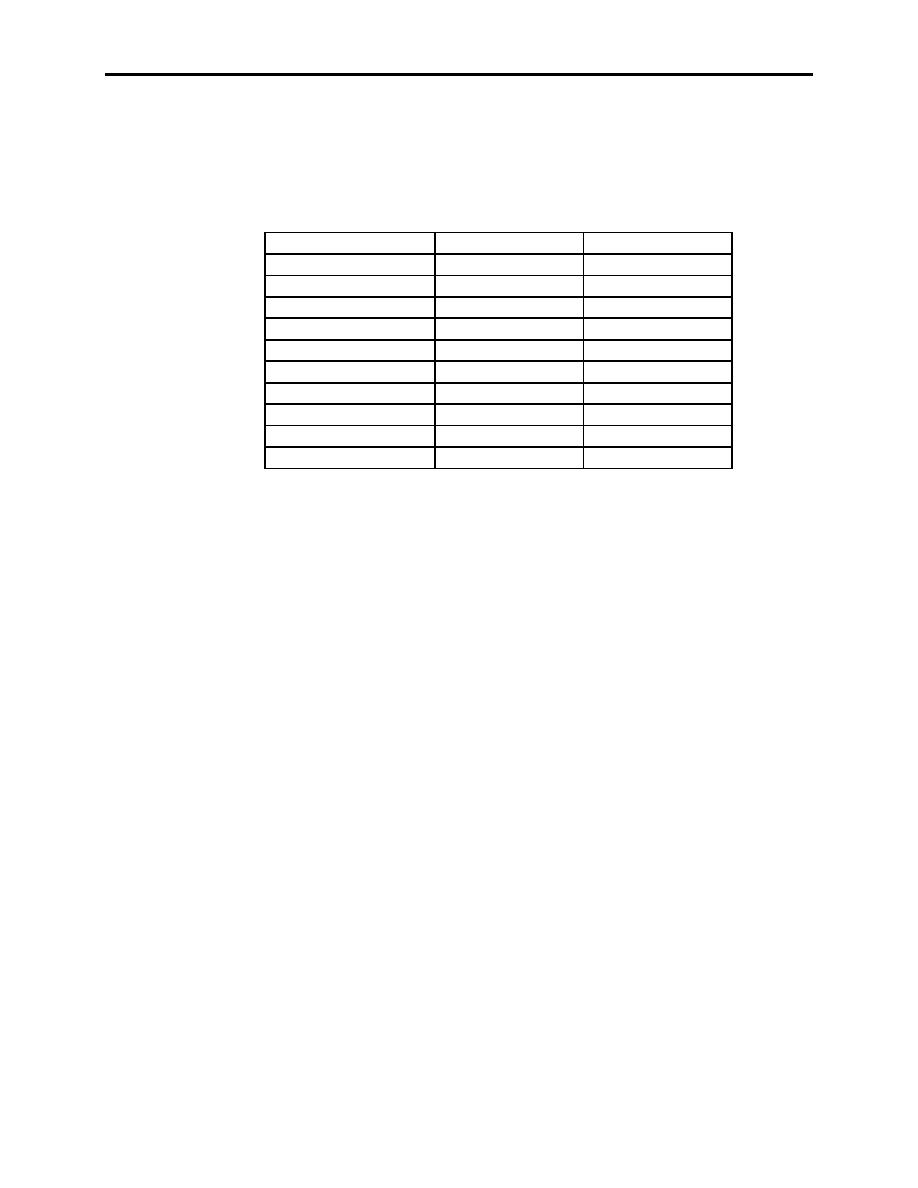 |
|||
|
|
|||
|
|
|||
| ||||||||||
|
|  SECTION LOW ALTITUDE TACTICS AND PROCEDURES
CHAPTER SIX
TIMING CORRECTIONS
The goal of every low-level is to arrive on target, on time. The first consideration must be
adjusting the indicated airspeed for the outside air temperature to obtain 300 KTAS. This can be
done using the following chart (a copy may be carried in your kneeboard for reference).
TEMP
300 KTAS
360 KTAS
(IAS)
(IAS)
20 F/-7 C
307
370
30 F/-1 C
304
366
40 F/+4 C
301
362
50 F/10 C
298
358
60 F/16 C
295
355
70 F/21 C
292
352
80 F/27 C
289
348
90 F/32 C
286
345
95 F/35 C
283
342
If the lead's timing is off, the following procedures will be used:
1.
Analyze number of seconds off from the preflight plan.
2.
A correction is not required until off by 12 seconds or more (due to chart error).
3. For 300 KTS, a 30-knot change to airspeed will reduce or add approximately 6 seconds per
minute of correction. The same correction applied at 360 KTS will reduce or add 5 seconds per
minute of correction.
In section formation, speed changes, like heading changes, are best when made gradually. The
lead may not make up time by pressing ahead at MRT. Section integrity is vital in a hostile
environment for survivability. Precise heading and airspeed control throughout the route will
avoid the need for drastic corrections during the target leg.
DISORIENTATION/LOST
The following procedures will solve almost any case of disorientation:
1. Determine the extent of disorientation. "Anxiety disorientation" can occur even with the
crew exactly on course if they fail to identify an anticipated checkpoint and misconstrue it as a
proof of being lost. When disorientation occurs, the crew must review their progress from their
last known position and determine the cause and extent of error. Causes include: errors in
heading, airspeed control, timing or navigational planning, malfunction of instruments or
navigational aids, wind, and/or deviations around weather or enemy defenses.
2. Check the clock immediately. Timing may be a factor in determining the extent of
disorientation and the correction required.
SECTION LOW ALTITUDE TACTICS AND PROCEDURES 6-23
|
|
Privacy Statement - Press Release - Copyright Information. - Contact Us |